You are browsing camaro5 

 |
|
|
#1 |
|
Drives: G5.R Join Date: Sep 2010
Location: SoCal
Posts: 2,377
|
Penske 7565 Dual bleed Strut/shock Plus Moreno Motorsports camber plate package, new
EDIT: 12/31/2016 Hey guys we are sweating the pie by dropping the price on the Penske's to $500 plus adding a set of our $549 version 2.0 camber plates to sweeten the deal even more. That's a $9,100 value for only $5900!!!!
Hey guys, we have an extra set of BRAND NEW Penske's we are selling. List on them is $8600. This is the best suspension set up you can get for this car and by far the lowest you will find them. Same dampers used by the z/28.R's.  Our dealer price is 25% of list or $6450. Which is what we paid. We can provide the receipt as proof. We are selling them at cost Price is firm. Selling price $6450 shipped. Read up on them here: http://www.camaro5.com/forums/showthread.php?t=382055 If interested PM me. Justin  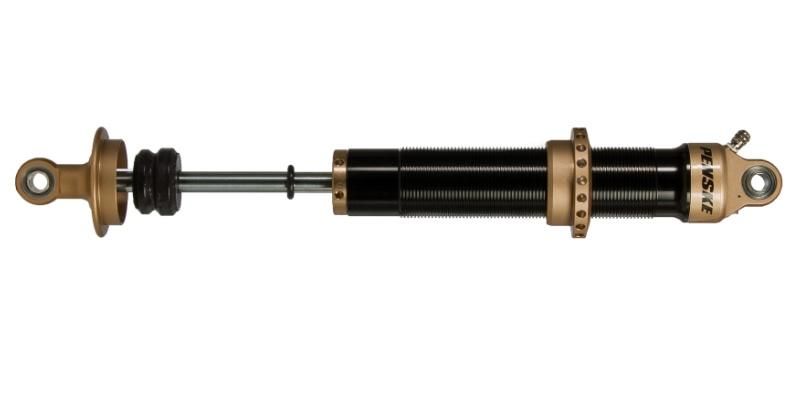 HERE SOME MORE INFO ON PENSKE: Simply put, Penske racing shocks are recognized in the racing industry as THE damper to have in your car. Next time you are at the races, check the suspension in the winning car. Chances are, you’re gonna see some Penske gold.. In F1, 75% of race cars are running on Penske. In Indy car racing, 80% of race cars are running on Penske. In NASCAR, 100% of race cars are running on Penske. In Tudor-DP (prototypes), 90% of race cars are running on Penske. In NHRA Pro Stock, 100% of race cars are running on Penske. I would say they are doing something right. Take note that this is not because Penske is sponsoring all the winning race teams by giving them free product. Racing is Penske’s market… Every one of those teams has to pay up for their dampers. If Penske gave out parts, there wouldn’t be very much money to make since the street market rarely can afford, or justify the cost of a top tier damper set. Additionally, in racing, if the team sees a part or opportunity that will help them go faster, they will take it. Period. This fact of racing keeps Penske on their toes, constantly bettering their offerings. Some of you may know that we decided to go to a different shock/strut set up than the pfadts. We decided to upgrade to what is IMO the best aftermarket damper available for any car any where, I.E. Penske Racing Shocks. In this thread, I hope to cover our motivation for choosing Penskes over other options available to the camaro market. I will attempt to thoroughly go over the "Penske advantage”, so you guys can understand exactly what warrants the higher price tag on these high end dampers. Before going on, I’ll let you know that I'm going to be touching on some technical stuff, which may require some basic damper knowledge (particularly monotube dampers), so here are some quick bullet points to freshen up your memory, if you’ve learned this before. If you are new to dampers, you might need some further reading to fully understand what i’ll be talking about below. - If you look at either side of the piston, you’ll see a pattern of orifices. some that are closer to the OD of the piston and others that are closer to the ID. The outer orifices on the compression face are the path of the inner orifices on the rebound face, and vice versa. When the piston moves through the shock oil, the oil will flow in through the outer orifices, and out through the inner orifices on the other side. - Shim stacks on each face determine the valving of the shock. On the piston rod side is your compression stack, and the rod nut side is obviously your rebound stack. the shim stacks cover the inner orifices on each side, so when oil flows through, pressure will cause the shims on the corresponding side to flex and allow the oil to flow. Generally, the stiffer (thicker) the shims, the more force it will take for them to flex, I.E. the more damped the shock will be. Pistons will often have a 1-3 degree dish in them to preload the shims; more preload on the shims result in more damping, and will cause a “snappier” blow off. 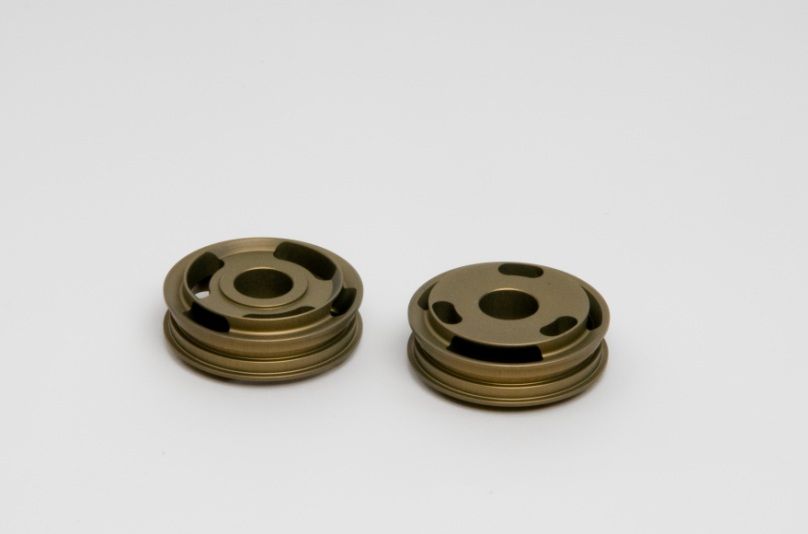 - Some, not all, mono tubes will have a bleed hole from one side of the piston to the other. This bleed hole allows for shock oil to bypass the shim stacks all together at low shaft speeds. Shocks with low speed rebound adjustability will commonly have a bleed hole in the shaft 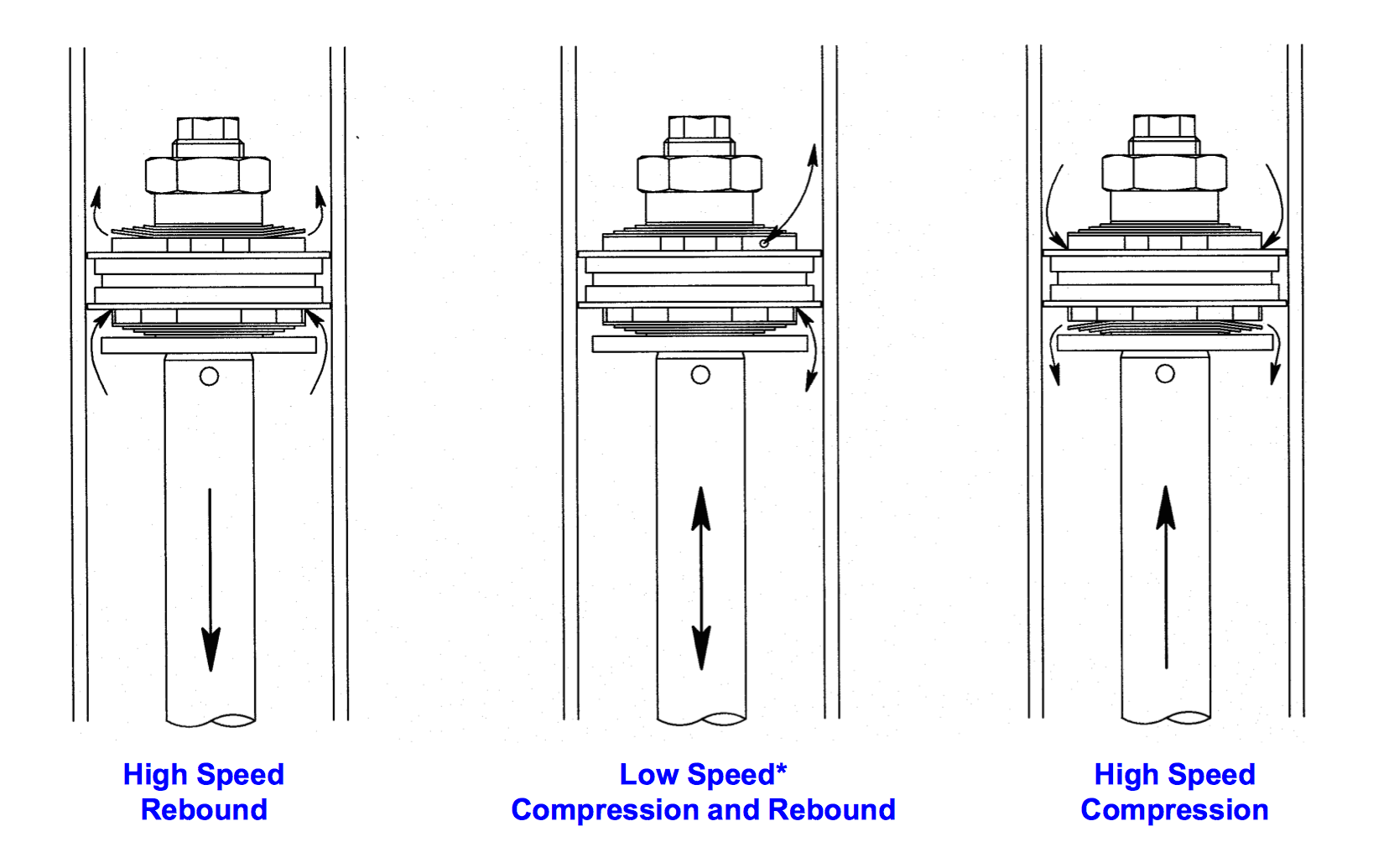 - When the shock compresses, the shaft is entering the shock body, and takes up space. Liquid is incompressible, Gas is compressible, which is why shocks need some degree of a gas charge inside the shock body, to compress and allow the oil displaced by the piston rod to go somewhere. - In most mono tube dampers, there’ll be a floating piston, either in the shock body, or in the remote canister if the damper has one, to separate the oil from the compressible gas (nitrogen). This pressurized gas is also what allows a monotube shock to be oriented any way in a car and still function at 100%. - Too little pressure in the nitrogen chamber can be a source of cavitation in the shock body. This is because little pressure behind the floating piston means little resistance, even less so than the resistance from the compression shim stack. What that means, is that at higher speeds, the floating piston will actually move up before the compression stack flexes and allows oil through to the other side. And since liquids can’t compress, it also can’t expand, so on the opposite side of the main piston (the shaft side), there becomes unoccupied space very quickly, and the oil is literally torn apart. This is called cavitation. At penske, they have this really cool see through shock body, that illustrates cavitation 100 times better than I could ever explain it, so I took a video of it to show you guys. Unfortunately... My phone recently broke and I lost the video in it. So here is a video of a clear shock I found on youtube, which just as well illustrates cavitation. - In this thread, you’ll see some shock dyno plots which I will use as examples for the topic at hand. - A CVP plot will be based on the top speed you set the dyno to run for that test. The dyno will take several measurements of the force at each shaft velocity as it accelerates in compression, decelerates in compression, accelerates in rebound and decelerates in rebound. So on a CVP plot, you will see one continuous loop, with 4 section, where each direction change is a change in acceleration of the shaft. Compression is usually reflected on the top half (positive) portion of the graph, and rebound is reflected on the bottom (negative) portion. 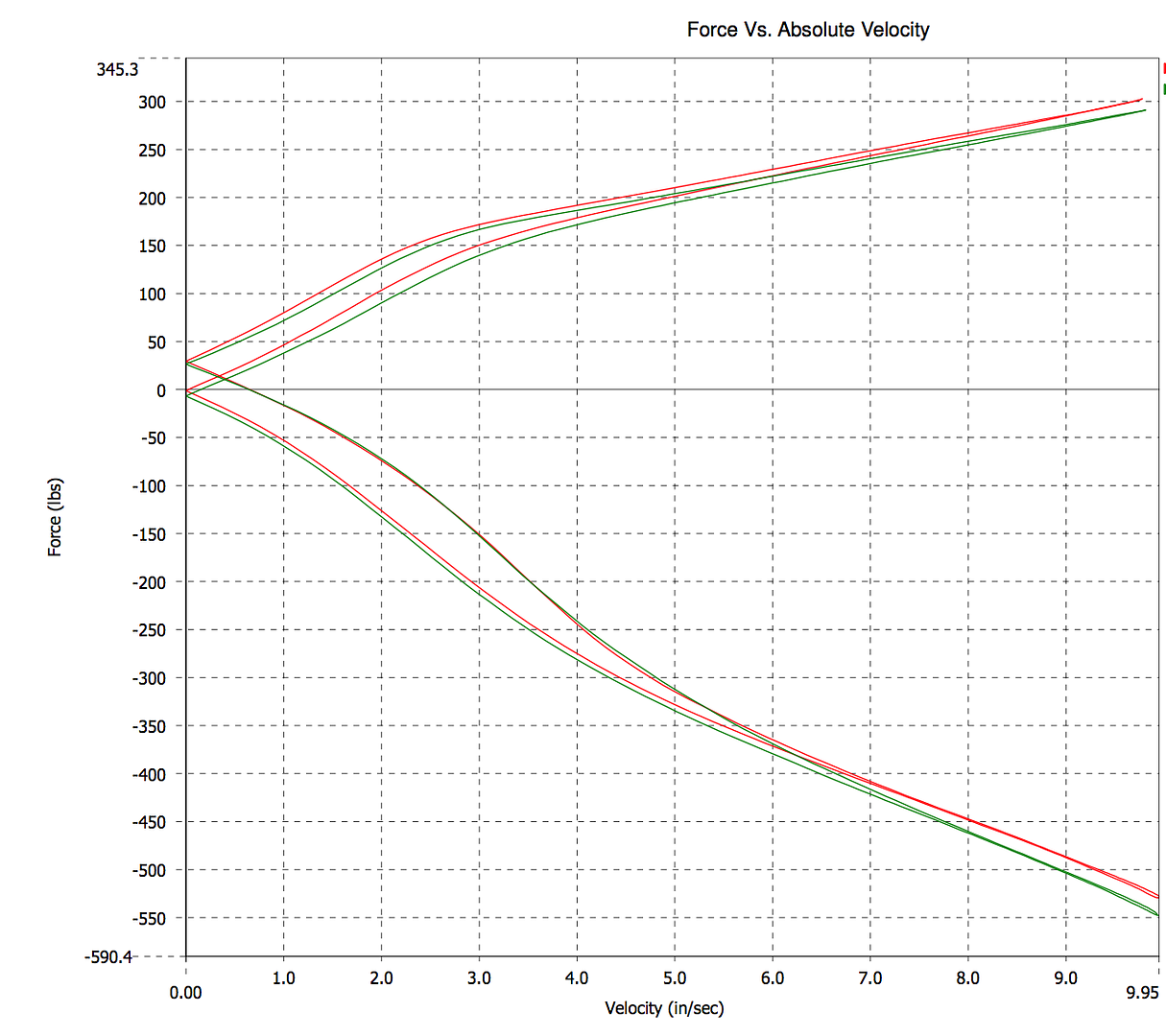 - When a PVP plot is run, several different peak shaft speeds are input into the dyno software, and the dyno will run the shock at each velocity input, record the force at that velocity, and move on to the next velocity input. The data is then averaged and plotted onto the graph. Since the plot is only based on peak velocities, there will be 2 lines, one for compression and another for rebound. PVP plots are what you’ll see on the internet most commonly, simply because they are easier to read. Again, compression is on top, rebound on bottom. 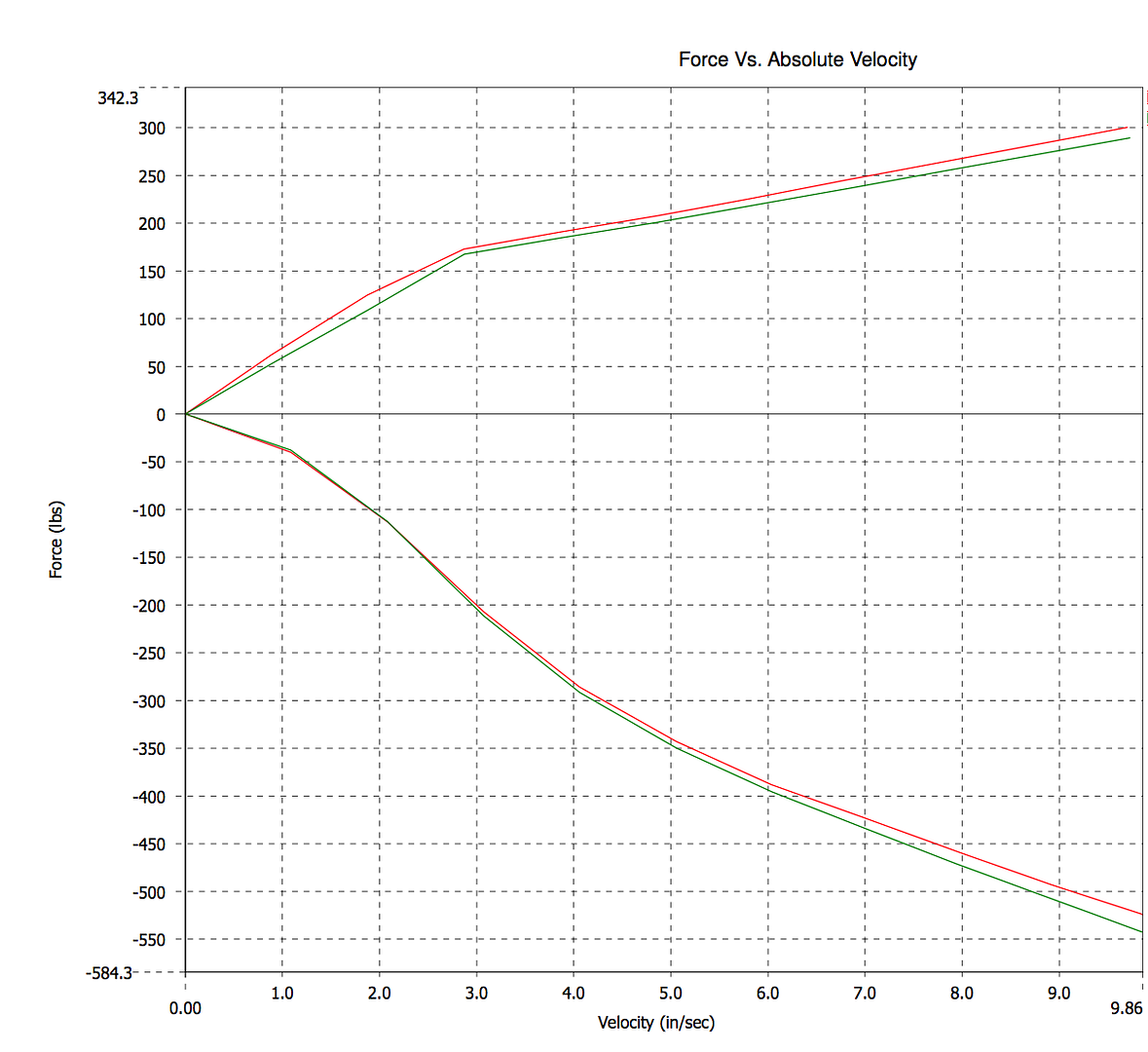 - There is also a force vs position graph, AKA the football graph, which I won’t be covering. - There are 3 different basic types of force curves, linear, digressive, and progressive. - In a linear curve, force will increase linearly (go figure) as velocity increases. - In a digressive curve, force will increase at a rate that is decreasing as velocity increases. - In a progressive curve, force will increase at a rate that is increasing as velocity increases. - These are how the curves are defined, however, on a dyno plot they all may look fairly linear with a change in direction at some velocity, which will determine whether it is progressive, digressive or linear. See examples below. 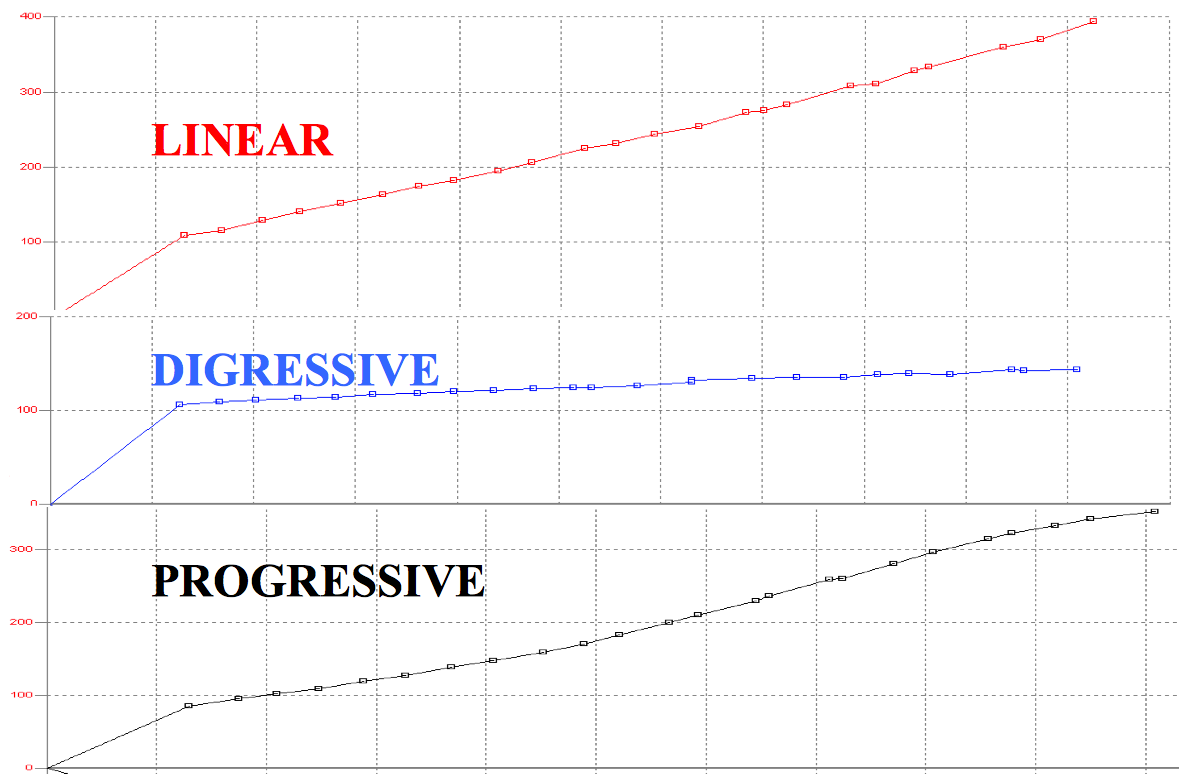 - As the piston accelerates, it will have a curve that will be similar, but not identical to the curve as the piston decelerates in its stroke. The difference between the accelerating profile and the decelerating profile is called hysteresis. This means force at 5 in/s (arbitrary) while the dampers is accelerating in bump will be different (lower) than the force at 5 in/s when the shock is decelerating in bump. Hysteresis can be most easily be seen in CVP plots. A quality damper will generally have minimal hysteresis. In the graph below, 1 is compression accelerating, 2 is compression decelerating, 3 is rebound accelerating, and 4 is rebound decelerating. 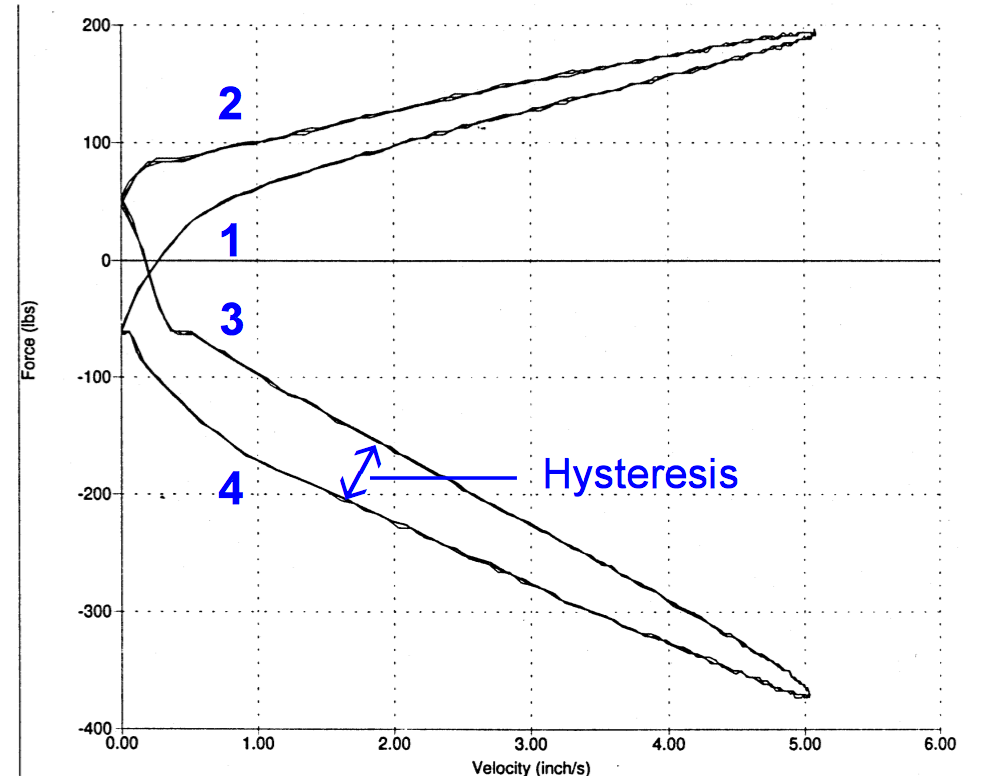 Superior technology adapted from F1 As mentioned above, there is a good portion of F1 cars that run on Penske shocks. F1 is internationally regarded as the highest form of automotive racing, and as such, is always evolving with different trick ways to get the car faster than the other guy. While I was at Penske, I saw that the design engineers were hard at work thinking of different ways to improve an F1 damper. Each and every year, and even mid year, the engineers must come up with something new, that promises to be better than last years, or else they will fall behind. These shock engineers will never reach a “best” design, simply because they are always looking to come up with a design that is better than the last, and will never stop. So what does that mean for us? Well, Penske users get to take advantage of this never ending pursuit of the perfect damper through trickle down effect. One particularly trick tech that is built into our dampers is called “dual bleed adjusters” (DB). Penske DB dampers allow oil to flow through small ports on the shaft right before the piston and through the bottom of the shaft, bypassing the shim stacks during low speed inputs. Low Speed, which is typically the 0 - 3 in/s portion on a shock dyno plot, is going to be what the driver feels the most, from cornering, braking, and accelerating. And unlike other dampers, Penskes with DB tech allow the user to individually adjust LS compression and LS rebound, making them the most effective dampers for on track tune-ability. I.E. If you are running on the track, and your car feels like it is rolling around a lot, high speed adjusters, in compression or rebound, aren’t going to do much for you. In such a case, you would need more low speed damping to control the car. As another example, going from a summer tire to an R-compound (increasing grip) will typically require more LS damping as well… and vice versa. Below is a Diagram I grabbed from Penske which shows nicely what is going on inside a DB damper. 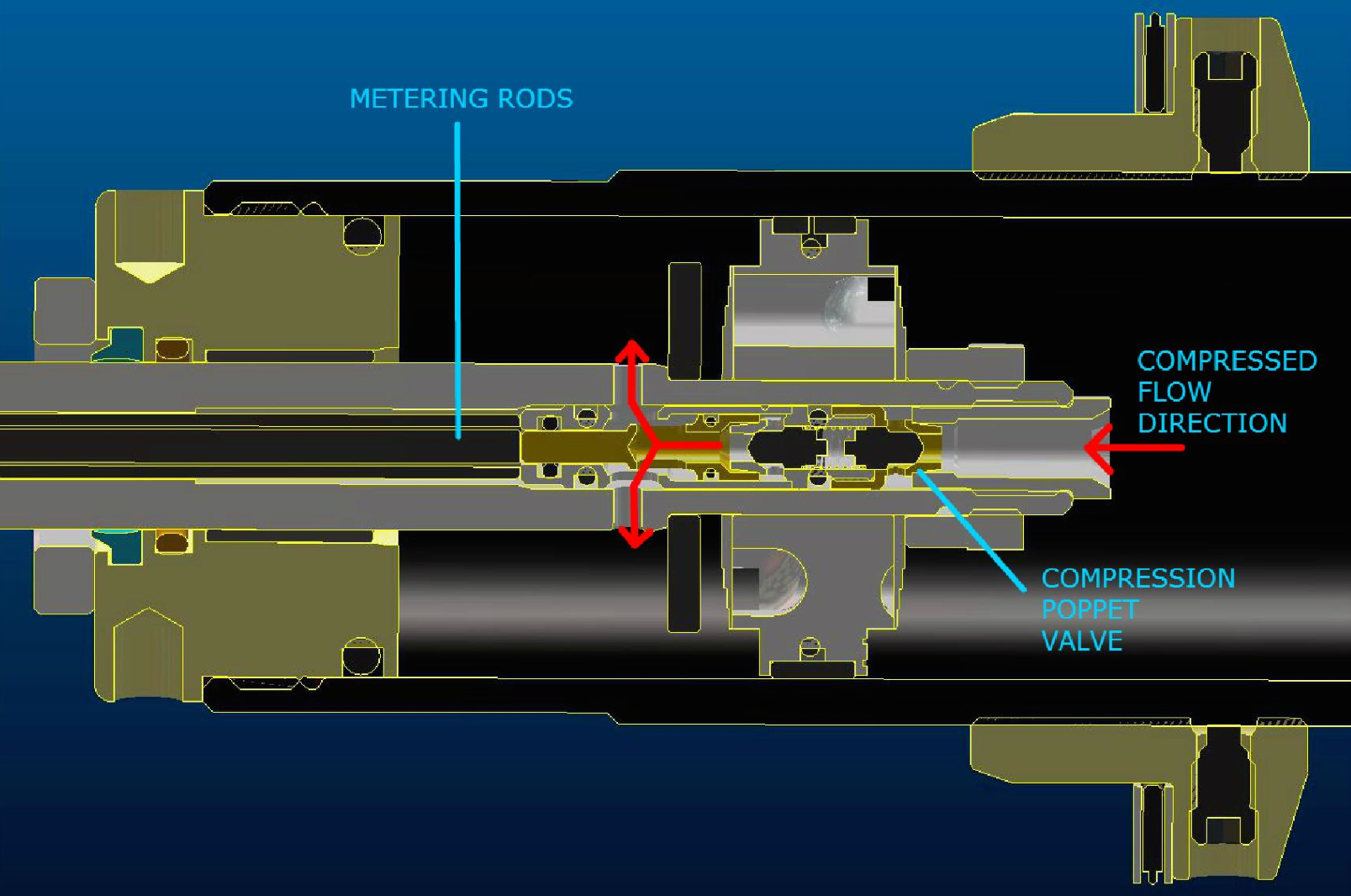 
Last edited by Moreno1; 12-31-2016 at 05:44 PM. |
|
|

|
|
|
#2 |
        Drives: '14 1LE Join Date: Nov 2013
Location: NJ
Posts: 2,435
|
What are the build specs?
|
|
|

|
|
|
#3 |
|
Drives: G5.R Join Date: Sep 2010
Location: SoCal
Posts: 2,377
|
|
|
|

|
|
|
#4 |
    Drives: 2013 ZL1 A6 #7860 Join Date: Apr 2014
Location: CO, USA
Posts: 1,279
|
Probably over kill for a drag setup cutting 1.3x 60 foots?
|
|
|

|
|
|
#5 |
|
Drives: G5.R Join Date: Sep 2010
Location: SoCal
Posts: 2,377
|
|
|
|

|
|
|
#6 |
 |
 
|
|
|

|
|
|
#7 |
|
Drives: G5.R Join Date: Sep 2010
Location: SoCal
Posts: 2,377
|
Hey guys we are sweating the pie by dropping the price on the Penske's to $500 plus adding a set of our $549 version 2.0 camber plates to sweeten the deal even more. That's a $9,100 value for only $5900!!!!
|
|
|

|
|
|
#8 |
|
Drives: G5.R Join Date: Sep 2010
Location: SoCal
Posts: 2,377
|
Bump Guys. Here is a picture of our new designed camber plates that we are adding to the offer. We realized that this setup isn't inexpensive even with the huge saving but we aren't in any hurry to sell this package. Eventually we will find the right buyer.
|
|
|

|
|
|
#9 |
        Drives: '14 1LE Join Date: Nov 2013
Location: NJ
Posts: 2,435
|
Will there be a sale thread for the new camber plates, with more details/specs, etc? Thanks
|
|
|

|
|
|
#10 |
|
Drives: G5.R Join Date: Sep 2010
Location: SoCal
Posts: 2,377
|
Yes, I'm think of making a comparison outline and between these and the competition. Just swamped right now. Things will change in June when I finish with my engineering degree.
|
|
|

|
|
|
#11 |
|
Drives: G5.R Join Date: Sep 2010
Location: SoCal
Posts: 2,377
|
Bumps, still available
|
|
|

|
|
|
#12 |
|
Hamfist Racing
Drives: '15 Z/28 Join Date: Nov 2014
Location: North Jersey
Posts: 208
|
Still available?
__________________
NNJR SCCA - @autoxer
|
|
|

|
|
|
#13 |
 Drives: 2018 ZLE Join Date: Jul 2014
Location: Ontario, Canada
Posts: 580
|
i was thinking the same
|
|
|

|
|
|
#14 |
|
Drives: G5.R Join Date: Sep 2010
Location: SoCal
Posts: 2,377
|
TTT
|
|
|

|
|
|
|
|
 |
|
|